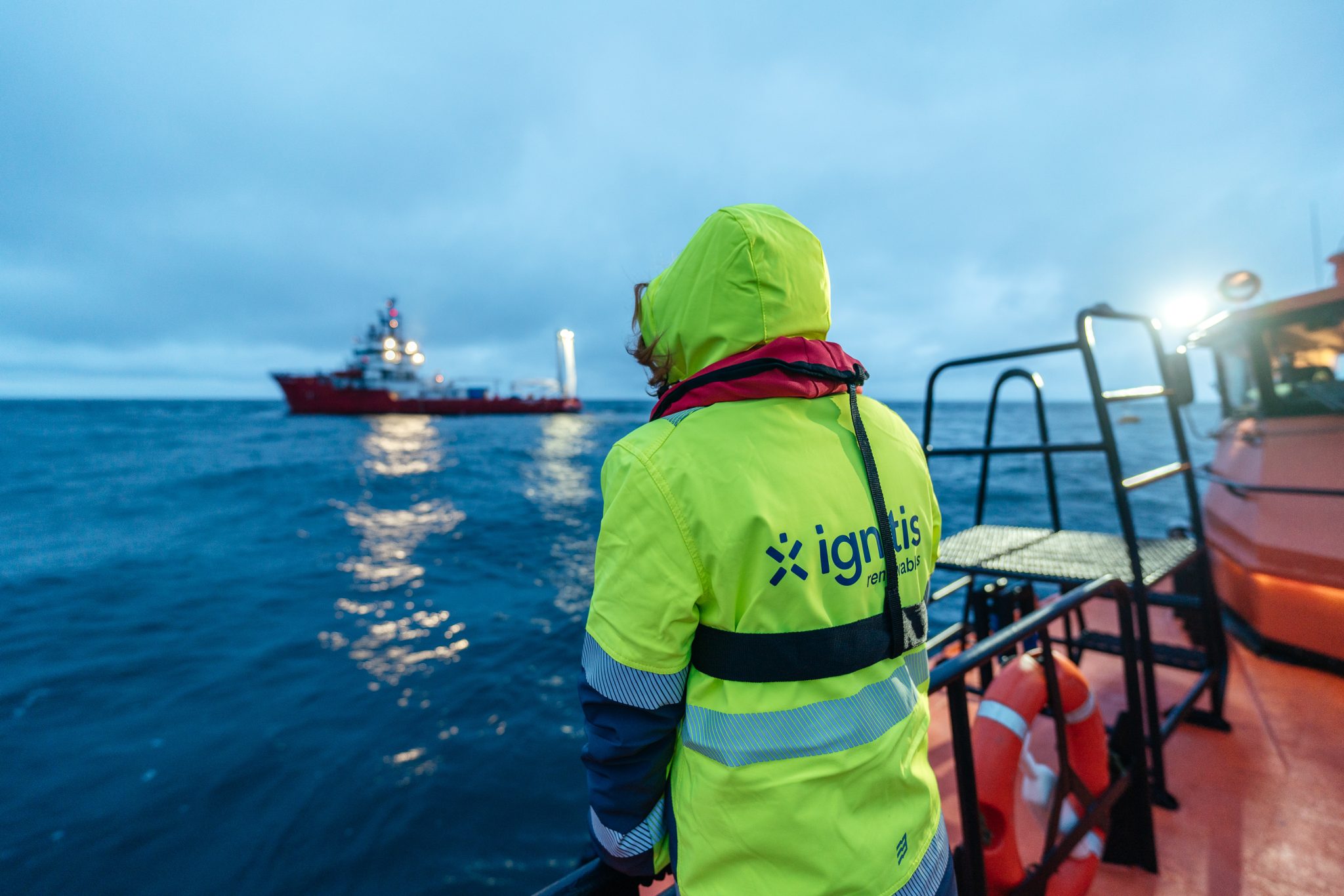Ignitis Renewables, an international green energy company, continues the development of the first offshore wind farm in the Baltic States and is taking wind and meteorological measurements in the Baltic Sea that are necessary for the project. For this purpose, a floating measuring station with specialised equipment was brought to the maritime area of the future offshore wind farm.
The measuring station, which was put on a special buoy, will provide environmental monitoring data in real time to help make decisions on developing the project of strategic importance to Lithuania’s energy sector. These data will also help the company to achieve its goal to install offshore wind turbines of 700-megawatt (MW) capacity by 2030. Such capacity would meet up to a quarter of Lithuania’s current electricity demand.
“To have accurate data on prevailing wind speeds and other hydro-meteorological parameters such as wave height, direction and speed of currents, air and water temperature as well as bat activity in the maritime area of the offshore wind farm, our partner Fugro, towed one of their wind LiDAR buoy’s using specialised equipment to the maritime area of the future offshore wind farm and secured it,” says Dainius Stepanonis, Project Manager at Ignitis Renewables who is responsible for marine research.
According to him, this is a very important step in the implementation of the largest current energy project in Lithuania. World-class experts and the latest technology are used to carry out the work.
“All the work in the territory will be completed within a few days, while the installed equipment will be left to collect and continuously transfer data remotely for at least a year, with the option, if necessary, to continue studies for a longer period,” says D. Stepanonis.
The expert from Ignitis Renewables clarifies that wind speed is measured at different altitudes from 20 to 280 metres, while water parameters are measured at depths of up to 4 metres. These data are crucial for selecting future wind turbine models, estimating the necessary investments, designing the turbine layout and their period of operation, and assessing other important aspects. Specialists conducting the studies are particularly interested in data of the winter period because in winter, the winds are the strongest and meteorological conditions are the worst.

It is planned that Lithuania will be the first of the Baltic States to have an offshore wind farm. The maritime area in the Baltic Sea designated for the offshore wind farm is approximately 120 square kilometres and is located at least 36 km away from the shore, approximately 60 km away from the Port of Klaipėda. The depth at the maritime area ranges from 28 to 48 metres, and the average annual wind speed there is around 9–10 m/s. It is these data that will be adjusted during this stage.
The number of wind turbines to be erected there will be up to 55, with a maximum height of around 350 metres. All of these parameters will depend on the findings of studies, the environmental impact assessment, adopted technologies and other conditions. Based on the currently available information, the capacity, location of the wind turbines, their distance from the shore as well as the sea depth are all suitable for wind energy development and corresponds to the scope and conditions of other offshore wind farm projects in Europe.
Offshore wind is much more efficient and reliable for generating electricity compared to onshore wind. At sea, the wind is not obstructed by natural barriers such as trees, mountains or buildings. This makes electricity generation more efficient and reliable. Offshore wind is an especially reliable energy source as green electricity can be generated even when wind speed on the shore seems low.
Source: Ignitis
















